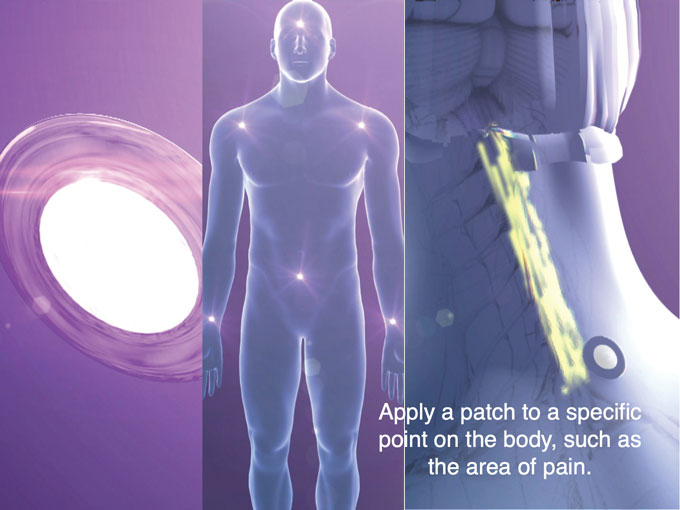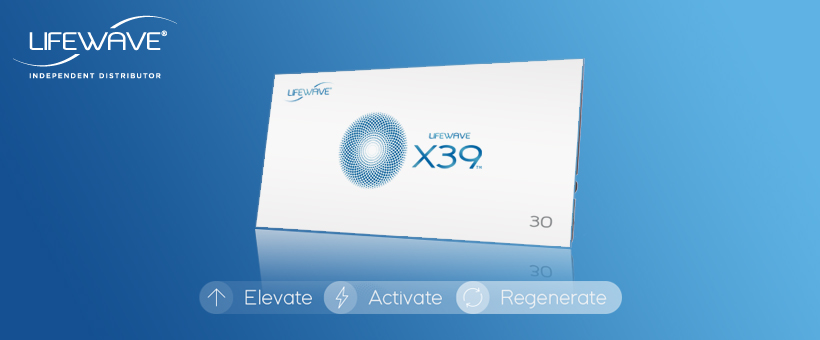Imagine being able to improve your sleep and wake up feeling refreshed and energized each morning. It may seem like a dream, but with the power of infrared light therapy, you can turn this into a reality. Infrared light therapy has emerged as a game-changer in the world of sleep, offering a non-invasive and natural solution to enhance the quality of your slumber. By gently penetrating your skin and stimulating cellular rejuvenation, infrared light therapy promotes a deep and restful sleep, leaving you feeling revitalized and ready to take on the day. Say goodbye to sleepless nights and hello to the ultimate sleep experience with infrared light therapy for sleep.
The Science Behind Infrared Light Therapy
Infrared light therapy is a type of treatment that utilizes light of specific wavelengths to provide various health benefits, including improving sleep quality. This therapy involves exposing the body to infrared light, which is part of the electromagnetic spectrum. Infrared light has longer wavelengths than visible light, making it invisible to the human eye.
How Infrared Light Works
Infrared light therapy works by penetrating the skin and reaching deep into the body’s tissues. When infrared light is absorbed by the body, it stimulates the production of ATP (adenosine triphosphate), the energy currency of cells. This increase in ATP promotes cellular repair and regeneration, helping to alleviate various health issues.
Furthermore, infrared light therapy has a vasodilatory effect, meaning it widens blood vessels and improves blood circulation. By enhancing blood flow, more oxygen and nutrients can reach the body’s tissues, promoting healing and reducing inflammation.
Benefits of Infrared Light Therapy for Sleep
In recent years, infrared light therapy has gained popularity as a natural and non-invasive method for improving sleep quality. Several benefits of infrared light therapy contribute to its effectiveness in enhancing restful slumber:
-
Relaxation: Exposure to infrared light promotes relaxation by reducing muscle tension and inducing a state of calmness. This relaxation response can aid in falling asleep more quickly and experiencing deeper sleep stages.
-
Pain Relief: Infrared light therapy has analgesic properties, meaning it can alleviate pain. By reducing pain and discomfort, this therapy can help individuals with sleep difficulties, such as those suffering from chronic pain conditions, find relief and improve sleep quality.
-
Circadian Rhythm Regulation: Infrared light therapy can positively influence the body’s natural sleep-wake cycle, also known as the circadian rhythm. By regulating the production of sleep-regulating hormones like melatonin, infrared light therapy helps synchronize the body’s internal clock and promote healthy sleep patterns.
-
Stress Reduction: High levels of stress can hinder the ability to relax and fall asleep easily. Infrared light therapy has been shown to reduce stress and anxiety levels, promoting a more relaxed state conducive to a good night’s sleep.
Types of Infrared Light Therapy
Infrared light therapy can be categorized into two main types based on the specific wavelengths used: near-infrared light therapy and far-infrared light therapy.
Near-infrared Light Therapy
Near-infrared light therapy utilizes wavelengths ranging from 700 to 1400 nanometers. This type of therapy is often used for localized treatment, targeting specific areas of the body. Near-infrared light can penetrate the skin more deeply than visible light, making it effective for promoting tissue repair and reducing inflammation.
Far-infrared Light Therapy
Far-infrared light therapy operates within the infrared-A range, with wavelengths ranging from 3,000 to 100,000 nanometers. Unlike near-infrared light therapy, far-infrared light therapy primarily produces gentle heat rather than penetrating as deeply into the body. This therapy is often used in the form of infrared saunas, providing whole-body exposure and promoting relaxation.
Using Infrared Light Therapy for Sleep
If you are considering incorporating infrared light therapy into your sleep routine, it is important to understand how to choose the right device and set up an effective therapy routine.
Choosing the Right Infrared Light Therapy Device
When selecting an infrared light therapy device for sleep, consider the following factors:
-
Wavelengths: Look for a device that emits near-infrared or far-infrared light, depending on your specific needs and preferences.
-
Safety Features: Ensure that the device has appropriate safety features, such as timers and auto shut-off functions, to prevent overexposure or accidents.
-
Ease of Use: Opt for a device that is user-friendly and easy to operate, allowing you to comfortably incorporate it into your nightly routine.
-
Quality and Reputation: Research different brands and models to ensure you select a reliable and reputable device known for its effectiveness and durability.
Setting Up Your Infrared Light Therapy Routine
To maximize the benefits of infrared light therapy for sleep, establish a consistent routine by following these guidelines:
-
Timing: Incorporate infrared light therapy into your evening routine, preferably a few hours before bedtime. This allows ample time for relaxation and the promotion of optimal sleep.
-
Duration: Start with shorter session durations, typically around 10-20 minutes, and gradually increase as you become more accustomed to the therapy. Avoid overexposure, as longer sessions may cause adverse effects.
-
Environment: Find a quiet and dimly lit space where you can comfortably use the infrared light therapy device. Creating a relaxing atmosphere can enhance the effectiveness of the therapy.
-
Consistency: For optimal results, aim to use the infrared light therapy device regularly. Consistency is key in reaping the full benefits of this therapy for sleep improvement.
Infrared Light Therapy and Circadian Rhythm
Understanding the body’s circadian rhythm and how infrared light therapy affects it is crucial in comprehending the therapy’s impact on sleep quality.
Understanding Circadian Rhythm
The circadian rhythm is an internal biological clock that regulates the sleep-wake cycle, among other physiological processes. This natural rhythm operates on a roughly 24-hour cycle and is influenced by external factors such as light exposure, particularly the presence or absence of natural sunlight.
How Infrared Light Therapy Affects Circadian Rhythm
Infrared light therapy can have a positive impact on circadian rhythm by influencing the production of melatonin, a hormone crucial for maintaining healthy sleep patterns. Exposure to appropriate wavelengths of infrared light can stimulate the production of melatonin, enhancing its release during the evening and promoting drowsiness and sleepiness.
Furthermore, infrared light therapy can help regulate the body’s internal clock by resetting the circadian rhythm. Consistent and appropriate timing of infrared light therapy sessions can help synchronize the body’s sleep-wake cycle, making it easier to fall asleep and wake up at desired times.
Infrared Light Therapy and Melatonin
Melatonin plays a vital role in sleep regulation, and infrared light therapy can influence its production and release, ultimately enhancing sleep quality.
Role of Melatonin in Sleep
Melatonin is a hormone responsible for signaling the body to prepare for sleep. The pineal gland in the brain produces melatonin in response to low light levels, increasing in the evening and remaining elevated throughout the night. Melatonin promotes drowsiness, helps maintain sleep, and assists in maintaining a consistent sleep-wake cycle.
Influence of Infrared Light Therapy on Melatonin Production
Infrared light therapy has been shown to stimulate the production of melatonin, contributing to its beneficial effects on sleep. By exposing the body to appropriate infrared light wavelengths, especially in the evening, melatonin levels can increase, promoting a more restful and rejuvenating sleep experience.
This increase in melatonin production can be particularly beneficial for individuals with sleep disorders, such as those experiencing difficulties with falling asleep or maintaining a consistent sleep schedule.
Infrared Light Therapy and Insomnia
Insomnia is a common sleep disorder characterized by difficulty falling asleep, staying asleep, or experiencing non-restorative sleep.
What is Insomnia?
Insomnia can be caused by various factors, including stress, anxiety, physical discomfort, and disruptions in the body’s sleep-wake cycle. It can lead to daytime fatigue, irritability, and impaired cognitive function.
Benefits of Infrared Light Therapy for Insomnia
Infrared light therapy shows promise as a complementary treatment for insomnia. Its relaxing and pain-relieving effects can help alleviate the underlying causes of insomnia, promoting better sleep. By reducing stress, tension, and discomfort, infrared light therapy helps create an environment conducive to relaxation and restful slumber.
Moreover, the regulation of melatonin production through infrared light therapy can help reset the sleep-wake cycle in individuals with insomnia, making it easier to fall asleep and stay asleep throughout the night.
Infrared Light Therapy and Sleep Disorders
In addition to insomnia, there are numerous other sleep disorders that can benefit from the incorporation of infrared light therapy.
Common Sleep Disorders
Some common sleep disorders that may be alleviated by infrared light therapy include:
-
Sleep Apnea: Infrared light therapy can help improve sleep quality for individuals with sleep apnea by reducing inflammation and promoting relaxation of the airway muscles.
-
Restless Leg Syndrome (RLS): Infrared light therapy’s pain-relieving properties can provide relief for individuals with RLS, reducing discomfort and promoting better sleep.
-
Shift Work Sleep Disorder: Shift workers often struggle with maintaining a consistent sleep-wake cycle due to irregular work hours. Infrared light therapy can assist in resetting the internal clock and improving sleep patterns.
Infrared Light Therapy as a Complementary Treatment
While infrared light therapy cannot cure sleep disorders, it can be used as a complementary treatment in conjunction with other therapeutic approaches. By addressing various factors contributing to sleep disorders, infrared light therapy can enhance the effectiveness of existing treatments and promote better overall sleep quality.
Infrared Light Therapy and Sleep Quality
Measuring sleep quality is essential in determining the effectiveness of any sleep-enhancing intervention, including infrared light therapy.
Measuring Sleep Quality
Sleep quality can be assessed through various methods, including:
-
Sleep Diary: Keeping a record of sleep patterns, duration, and subjective feelings upon waking can provide insights into overall sleep quality.
-
Polysomnography: This comprehensive sleep study involves monitoring brain activity, heart rate, breathing, and other physiological parameters during sleep. It provides a detailed assessment of sleep stages and potential disruptions.
-
Actigraphy: Actigraphy involves wearing a wristwatch-like device that monitors movement and light exposure, providing an objective measure of sleep-wake patterns and activity levels.
Improvements in Sleep Quality with Infrared Light Therapy
Research suggests that infrared light therapy can lead to improvements in sleep quality. Studies have shown that individuals who receive infrared light therapy report better sleep, including increased sleep duration, decreased awakenings during the night, and enhanced sleep efficiency.
By promoting relaxation, regulating circadian rhythm, and influencing melatonin production, infrared light therapy enhances the overall sleep experience and contributes to better sleep quality.
Safety and Risks of Infrared Light Therapy
While infrared light therapy is generally considered safe, it is important to take certain precautions to ensure safety and minimize potential risks.
Ensuring Safety during Infrared Light Therapy
Follow these guidelines to ensure safe and effective use of infrared light therapy:
-
Read and Follow Instructions: Carefully read the instruction manual provided with the device and follow the recommended guidelines for usage.
-
Eye Protection: Use appropriate eye protection, such as goggles or glasses specifically designed for infrared light, to prevent potential damage to the eyes.
-
Avoid Overexposure: Adhere to recommended session durations and avoid excessive exposure to infrared light, as it may cause burns or other adverse effects.
-
Consult a Healthcare Professional: If you have any underlying health conditions or concerns, consult a healthcare professional before starting infrared light therapy to ensure it is suitable for you.
Potential Risks and Precautions
While infrared light therapy is generally well-tolerated, it is important to be aware of potential risks and take necessary precautions:
-
Burns and Skin Sensitivity: Prolonged or intense exposure to infrared light can cause burns or skin irritation. Adjust session durations and intensity levels according to your comfort and sensitivity.
-
Heat Sensitivity: Individuals with heat-sensitive conditions, such as multiple sclerosis, should use infrared light therapy with caution and consult with their healthcare provider beforehand.
-
Pregnancy: Pregnant individuals should consult with their healthcare provider before using infrared light therapy, as its effects on pregnancy have not been extensively studied.
It is always wise to err on the side of caution and seek professional advice if you have any concerns or questions regarding the safety of infrared light therapy.
Conclusion
Infrared light therapy offers a non-invasive and natural approach to enhance sleep quality. By leveraging the benefits of infrared light on relaxation, circadian rhythm regulation, melatonin production, and pain relief, individuals can experience improved sleep and wake up feeling more rested and rejuvenated.
With various types of infrared light therapy available, such as near-infrared and far-infrared light therapy, it is essential to choose the right device and establish a consistent therapy routine. Additionally, understanding the science behind infrared light therapy and its impact on circadian rhythm, melatonin production, and sleep disorders allows for a more comprehensive understanding of its benefits.
While infrared light therapy is generally safe, it is important to prioritize safety and minimize potential risks. By following recommended guidelines and consulting with healthcare professionals if necessary, individuals can safely incorporate infrared light therapy into their sleep routine and reap its numerous benefits for restful slumber.





